If you’re looking to maximize the nutrition in your diet, eating raw might not always be the best way to do it. That’s because a series of mechanical and chemical changes take place when food is harvested, stored, prepared, chewed, and digested. And these changes can have a major impact on the amount and bioavailability of the nutrients in your food.
Many foods are indeed more nutritious when eaten raw and fresh. But others are more nutritious after cooking, chopping, or crushing. In fact, the nutrients in certain foods can even be more absorbable when they’re eaten alongside other foods. Here’s how it works.
Easy and Effective Ways to Maximize the Nutrition in Your Diet
-
Know where your food comes from.
Eating locally grown produce ensures that you’re getting the best nutritional value from your fruits and vegetables. When a fruit or vegetable is picked from the plant, it’s being separated from its nutrient source. And the longer it’s separated, the more nutritional value it loses.
Factory farmed produce is grown and harvested several states away (sometimes even in another country). Then it’s packaged, shipped hundreds or even thousands of miles, then put on display at your local grocery store.
By that time, it may have been separated from the parent plant for a week, two weeks, or even more. By then it could have lost anywhere from 15 – 60 percent of its nutrition.
That’s why buying locally is so important. The closer you eat your food to when it is harvested, the more nutrition it contains. Thanks to advancements in urban indoor farming and artificial intelligence in agriculture, high-quality and locally grown produce can be found even in the city.
Head out to your local farmer’s markets, farm stands, and health food shops to ensure that you’re starting your meal prep with the most nutrient-dense produce possible. Many fresh meal delivery brands are great options as the produce is usually local.
-
Maximize nutrients by storing your produce the right way.
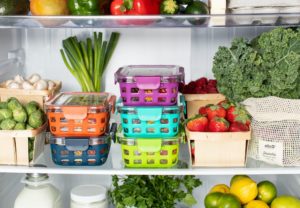
- Most vegetables: All vegetables that aren’t roots or winter squash should be stored in the refrigerator.
- Root vegetables: Root vegetables should be stored in a cool, humid, and dark place.
- Winter squash and pumpkins: Store in a cool (not cold!) dark, dry place.
- Fruits: Most fruits (including tomatoes and avocados) should be stored at room temperature away from direct sunlight. Berries should be stored in the fridge.
- Cut vegetables and fruits: You’ll maximize the nutritional value of your vegetables and fruits if you cut or chop them right before you eat them. But, if you’re doing food prep in advance, you can slow down the oxidation of nutrients by squeezing lemon juice on them and storing them in the fridge in an airtight container. The vitamin C in lemon juice is an antioxidant, which slows decay.
- Fresh herbs: Fresh herbs are loaded with beneficial phytonutrients, vitamins, and minerals, so use them liberally in your cooking. They should be stored in the produce drawer and used within a few days. If you need to store them longer, chop them up, and freeze them in an ice cube tray with olive oil or water to maintain maximum nutritional value and flavor.
-
How you prep your food can make a huge difference in nutritional value.
Utilize these food prep techniques to make the nutritional compounds more available.
- Cutting and chopping: Cutting and chopping your produce helps break down the rigid plant cell walls, which makes vitamins and minerals more easily absorbable.
- Crushing and mincing: Crushing and mincing garlic and onions releases an enzyme called alliinase. It helps the body form a nutrient called allicin, which protects the body against disease.
- Soaking: Soaking grains and beans before cooking and eating reduces their phytic acid content. Phytic acid blocks the absorption of several essential minerals, including magnesium, calcium, zinc, and iron.
-
Know which nutrients are heat sensitive.
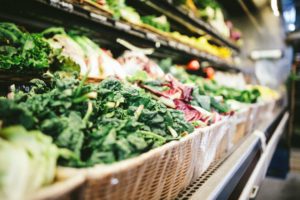
- Sources of B1: Brussels sprouts, beet greens, peas, sunflower seeds
- Sources of Vitamin C: Brussels sprouts, broccoli, bell peppers
- Sources of Folate: Spinach, turnip greens, broccoli
- Sources of Vitamin B5: Avocado, kale, broccoli, cauliflower
Keep in mind that these nutrients are also water-soluble. If you do cook them, maximize their nutrition by cooking them on low heat using a method that doesn’t expose them to too much water.
-
Know which foods should be cooked.
In many cases, you’ll lose anywhere from 15 to 55 percent of the nutrients in your food by cooking it. However, certain nutrients are actually more bioavailable after the food is cooked. These include:
- Lycopene: Cooking increases the bioavailability of lycopene in tomatoes by 25 percent.
- Beta carotene: Cooking increases the bioavailability of beta carotene in red, orange, and yellow veggies like carrots, tomatoes, peppers, and sweet potatoes. Cooking helps break down the cellular walls of the plant, making it easier for your body to digest and absorb the nutrition.
- Protein: Cooking your eggs and meat denatures the protein, which makes it more digestible.
- Iron and other minerals: Cooking makes the iron and other minerals in many foods more absorbable by decreasing oxalates. Oxalate makes these minerals inaccessible to your body by binding with them.
It’s also worth noting that cooking reduces possible anti-nutrients found in beans and grains.
-
Learn which foods to pair for maximum nutrition.
You may have noticed that certain cultures pair specific foods together. For example, Italians often serve greens with lemon and olive oil. Well, they’re definitely on to something because putting certain foods together not only tastes great, it also helps you absorb the nutrients in certain foods.

- Fat-soluble vitamins and healthy fats: Vitamins A, D, E, and K are fat-soluble vitamins, which means they need to be consumed with fat to maximize absorption. Foods that contain these vitamins include eggs, greens, mushrooms, and orange veggies. Pair them with healthy fats like nuts, avocado, olive oil, or free-range butter to maximize nutrition. Interestingly, foods like egg yolk, salmon, and sunflower seeds contain both fat-soluble vitamins and healthy fats.
- Iron and Vitamin C: Non-heme iron is iron that comes from non-meat food sources. This includes spinach, kale, lentils, and soybeans. To improve absorption of this type of iron, pair it with a food that’s high in Vitamin C, such as citrus, berries, or peppers. Vitamin C helps plant food let go of this important mineral.
Some Final Tips to Maximize the Nutrition in Your Diet
Don’t discount the value of frozen vegetables. Their nutritional value may be a bit less than what it was when they were freshly picked. But the reality is, some vitamins and minerals are better than none when you don’t have time for food prep. Eating a cup of frozen, cooked veggies is better than eating no vegetables at all. Pairing healthy habits like incorporating vegetables with options like women’s weight loss drinks can also help you stay on track with your fitness goals. At the end of the day, eating a variety of whole foods every day is still the best way to get a balanced diet, no matter how they’re prepared.
Want to unlock greater wellness?
Listen to our friends over at the Wellness + Wisdom Podcast to unlock your best self with Drew Canole of Organifi:


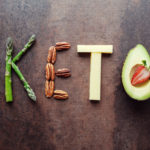
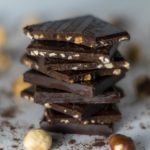
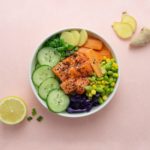


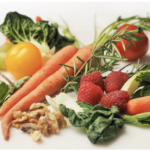
 Weight Loss + Your Gut Health: How the Two Are Related
Weight Loss + Your Gut Health: How the Two Are Related
Yes I think this the base For nutrition good keep it up.
Valuable knowledge. It’s fantastic. Thank you.